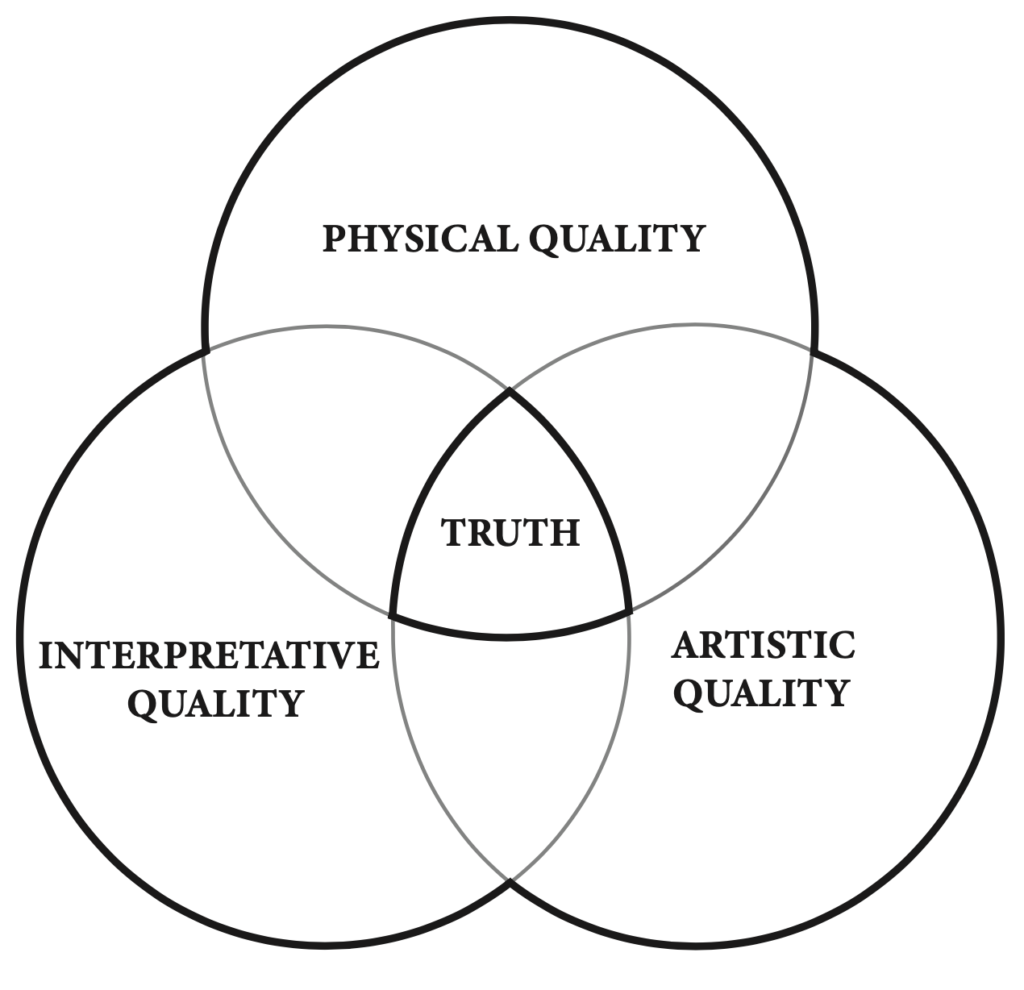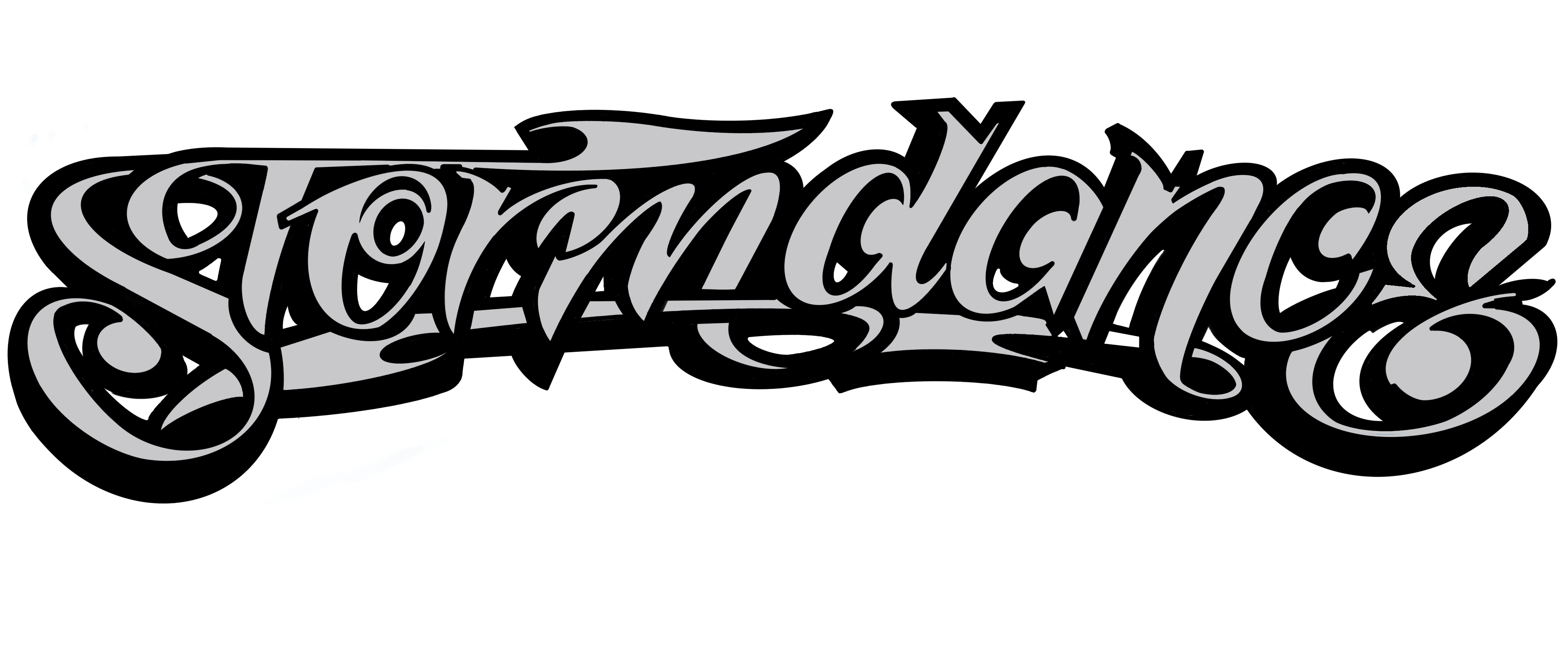The field of study immersed in the interpretation of art is known as Hermeneutics. In Greek mythology, Hermes served as the mediator between the Gods and humans, making interpretation a central focus for a Hermeneut. Dance performances are fundamentally a form of communication, and to grasp the meaning of a particular dance style, one must acquire knowledge of its vocabulary, cultural values, rules, and practices. Building upon the wisdom of great philosophers, I collaborated with my colleagues to develop our own framework called the „Threefold.“ It encompasses three essential spheres:
- A Physical qualities
- B Artistic qualities
- C Interpretive qualities.

The Threefold enables a comprehensive analysis of performances, styles, dancers‘ skills, and even battles. It also served as the foundation for the „Trivium“ Judging System, initially devised for Breaking Battles in the Olympics. Due to its descriptive nature rather than being prescriptive, the system has also gained prominence as a robust model for evaluating performance skills and as a valuable analytical tool for a dancer’s growth and development.
A. Physical qualities: To research for physical properties we use the research words:
- What
- Where
What is done? (Technique and Variety) Where did it happen? (Space)
B. Artistic qualities: To research for artistic properties we use the research words:
- Who
- How
Who is dancing? (Personality) How is the person dancing? (Creativity)
C. Interpretive Qualities: To research for interpretive properties we use the research words:
- Why
- When
Why does the person dance?(Performance reason) When were things happening? (Musicality and Dramaturgy)
Synonymous to the three spheres that define the categories of the „Physical, Artistic and Interpretive“ realms one can also use the body, mind and soul model or the „3H“ model as in „Hands, Head and Heart“.
Overall, the system of „threes“ in memory techniques leverages our cognitive tendencies, simplifies information, creates memorable patterns, and enhances communication, making it an effective and popular approach for memorization.
Performances
Humans naturally seek meaning in their experiences, finding significance in various aspects of life. When it comes to crafting moments that are truly unforgettable, dance serves as a powerful form of body language. A crucial aspect of a dancers journey involves understanding how movements resonate with others and how they can evoke diverse interpretations. This realization underscores the fundamental role of communication in performances, as they become a means to connect, express, and convey meaning to an audience. My personal dance career took off as I started performing in clubs. Soon thereafter, my crew and I were hired to showcase our talents on various occasions. The success of our performances hinged on two crucial factors: our authenticity in representing the art form and culture, as well as our ability to effectively convey their values. We were acutely aware of the potential detrimental effects of exploitation on the dance culture and its broader growth. Consequently, we adhered to strong principles that prevented us from compromising our integrity. The diverse stages we performed on provide a glimpse into the range and versatility of our shows. We engaged in club nights, street performances, theatrical productions, industrial shows, and shared the spotlight with musicians, comedians, and other performance artists. Our repertoire encompassed battling, cyphering, jamming, choreographed dance pieces, improvisations, music video productions, television appearances, and even choreographing and acting in movies and series. Being exposed to diverse performance spaces and audiences, we had to master the skill of adapting our artistic expressions to suit the specific contexts and occasions we encountered. Just as we assume different roles and exhibit diverse behaviors in various aspects of our everyday lives, dancers should possess the ability to adapt their movements to align with the essence of their performances. Whether we find ourselves in church, school, a club, work, court, a shop, at home, at the gym, interacting with the police, in a park, renovating, enjoying a candlelight dinner, attending a family reunion, and so forth, we naturally exhibit distinct behaviors while staying true to ourselves. Similarly, as performers, we must acquire the skill of gracefully navigating non-ideal stage and venue conditions. Successfully managing challenges such as unconventional music choices, varying floor surfaces, obstacles like poles or props on stage, or performing in front of an audience unfamiliar with the art form, showcases exceptional qualities in a performer. Dancing has been an integral part of my life, seamlessly woven into various moments and settings. Whether it’s waiting at bus stops, subway stations, or boarding areas, these often become impromptu practice and performance sessions. Particularly when I’m in the company of fellow dancers, we predominantly converse through movement, discussing intriguing ideas and captivating concepts. This exchange of ideas is often subtle, but in the presence of music or in spaces adorned with beautiful floors or inspiring surroundings, places like shops, parks, restaurants, and cafes occasionally transform into stages for performance. Embracing this inherent inclination allows me to authentically express myself no matter where I find myself.
